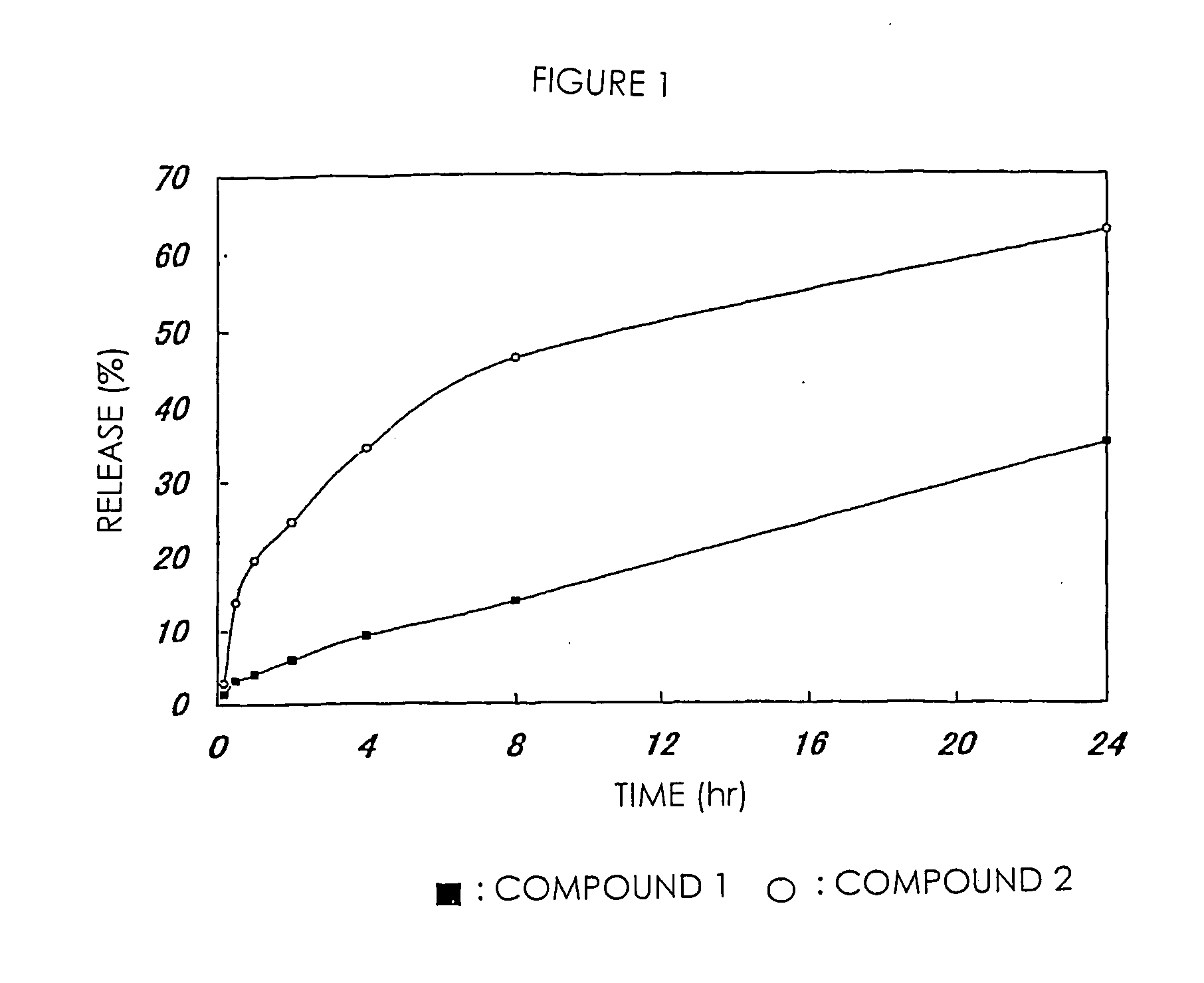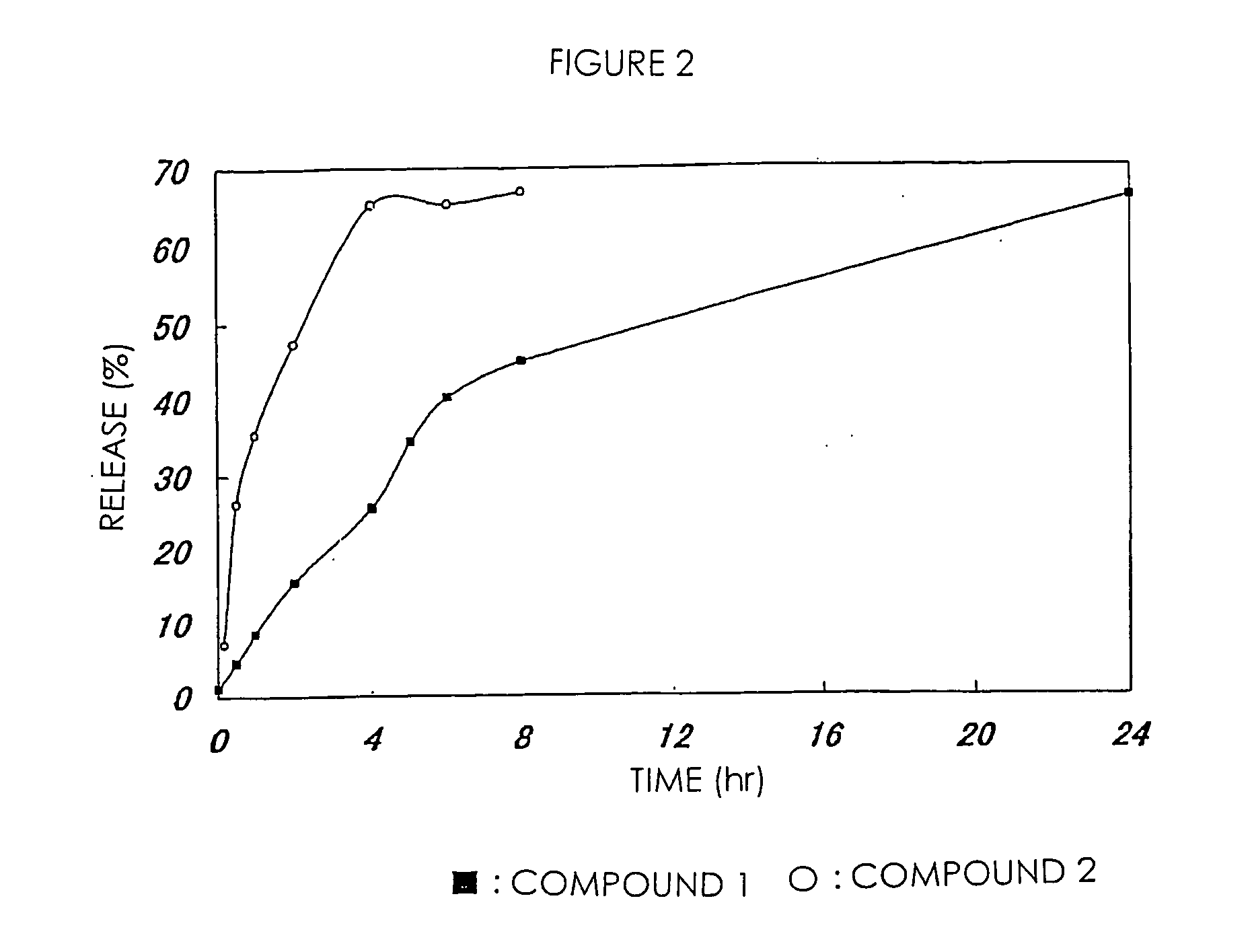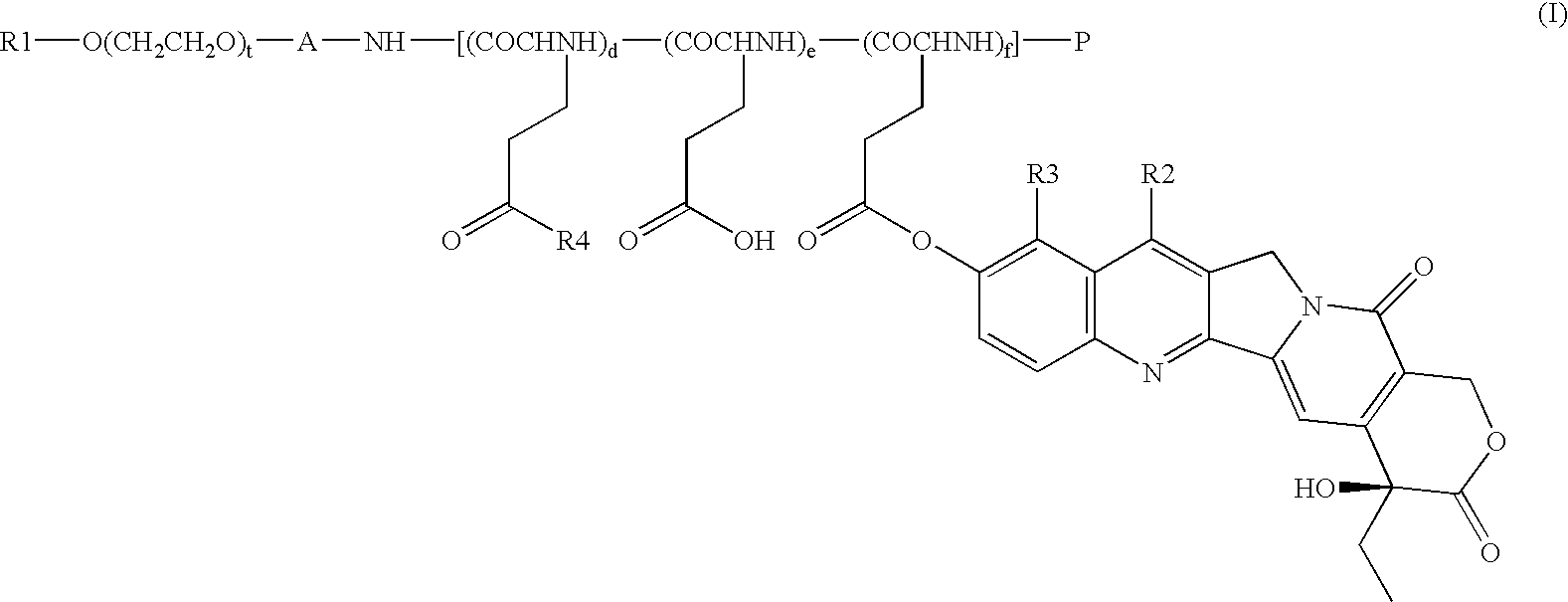High-molecular weight derivatives of camptothecins
- Summary
- Abstract
- Description
- Claims
- Application Information
AI Technical Summary
Benefits of technology
Problems solved by technology
Method used
Image
Examples
example 1
[0070] Synthesis of compound 1 (condensate of a block copolymer of methoxypolyethylene glycol having a molecular weight of approximately 12000 and polyglutamic acid having a polymerization number of approximately 28, with 7-ethyl-10-hydroxycamptothecin: general formula (I) in which R1=Me, A=trimethylene group, d+e+f=approximately 28, t approximately 273, R2=Et, R3=H, P═Ac)
[0071] A methoxypolyethylene glycol-polyglutamic acid block copolymer (210 mg) described in the following Reference Example 1 and 7-ethyl-10-hydroxycamptothecin (80 mg) produced in a method described in Japanese Patent Publication No. 62-47193 were dissolved in DMF (14 ml), to this was added DMAP (13.5 mg) and DIPC (0.116 ml), and the mixture was stirred for 20 hours at room temperature. To the reaction liquid, ethanol (40 ml) and diisopropyl ether (160 ml) were added and the mixture was stirred for 30 minutes at room temperature, then, the precipitate was filtrated, and washed with ethanol / diisopropyl ether (1 / 4 ...
example 2
[0072] Synthesis of compound 2 (condensate of a block copolymer of mono-methoxypolyethylene glycol having a molecular weight of approximately 12000 and polyglutamic acid having a polymerization number of approximately 7, with 7-ethyl-10-hydroxycamptothecin: general formula (I) in which R1=Me, A=trimethylene group, d+e+f=approximately 7, t=approximately 273, R2=Et, R3=H, P═Ac)
[0073] Methoxypolyethylene glycol-polyglutamic acid (797 mg) described in the following Reference Example 2 and 7-ethyl-10-hydroxycamptothecin (80 mg) produced in a method described in Japanese Patent Publication No. 62-47193 were dissolved in DMF (14 ml), to this was added DMAP (16.6 mg) and DIPC (0.142 ml), and the mixture was stirred for 20 hours at room temperature. To the reaction liquid, ethanol (40 ml) and diisopropyl ether (160 ml) were added and the mixture was stirred for 30 minutes at room temperature, then, the precipitate was filtrated, and washed with ethanol / diisopropyl ether (1 / 4 (v / v), 150 ml)....
example 3
Drug Release in the Absence of Hydrolytic Enzyme
[0074] The high-molecular weight derivative of camptothecins in Examples 1 and 2 were respectively dissolved in PBS (phosphate buffer saline; pH 7.1) and incubated at 37° C. 7-Ethyl-10-hydroxycamptothecin released from the high-molecular weight derivatives was separated and measured by HPLC. In comparison with a standard curve in this treatment, the amount of 7-ethyl-10-hydroxycamptothecin was calculated. This value was shown in FIG. 1 as a ratio based on the total drug amount measured from the drug content of a high-molecular weight prodrug. FIG. 1 shows that a drug is sustained-released from the high-molecular weight derivative of camptothecins of the present invention without depending on hydrolytic enzyme.
PUM
| Property | Measurement | Unit |
|---|---|---|
| temperatures | aaaaa | aaaaa |
| temperatures | aaaaa | aaaaa |
| v/v | aaaaa | aaaaa |
Abstract
Description
Claims
Application Information
 Login to View More
Login to View More - R&D
- Intellectual Property
- Life Sciences
- Materials
- Tech Scout
- Unparalleled Data Quality
- Higher Quality Content
- 60% Fewer Hallucinations
Browse by: Latest US Patents, China's latest patents, Technical Efficacy Thesaurus, Application Domain, Technology Topic, Popular Technical Reports.
© 2025 PatSnap. All rights reserved.Legal|Privacy policy|Modern Slavery Act Transparency Statement|Sitemap|About US| Contact US: help@patsnap.com



